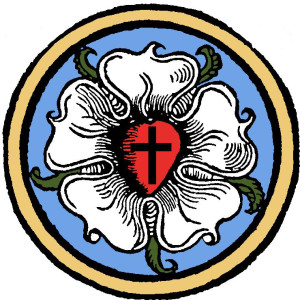
- Podcast Features
-
Monetization
-
Ads Marketplace
Join Ads Marketplace to earn through podcast sponsorships.
-
PodAds
Manage your ads with dynamic ad insertion capability.
-
Apple Podcasts Subscriptions Integration
Monetize with Apple Podcasts Subscriptions via Podbean.
-
Live Streaming
Earn rewards and recurring income from Fan Club membership.
-
Ads Marketplace
- Podbean App
-
Help and Support
-
Help Center
Get the answers and support you need.
-
Podbean Academy
Resources and guides to launch, grow, and monetize podcast.
-
Podbean Blog
Stay updated with the latest podcasting tips and trends.
-
What’s New
Check out our newest and recently released features!
-
Podcasting Smarter
Podcast interviews, best practices, and helpful tips.
-
Help Center
-
Popular Topics
-
How to Start a Podcast
The step-by-step guide to start your own podcast.
-
How to Start a Live Podcast
Create the best live podcast and engage your audience.
-
How to Monetize a Podcast
Tips on making the decision to monetize your podcast.
-
How to Promote Your Podcast
The best ways to get more eyes and ears on your podcast.
-
Podcast Advertising 101
Everything you need to know about podcast advertising.
-
Mobile Podcast Recording Guide
The ultimate guide to recording a podcast on your phone.
-
How to Use Group Recording
Steps to set up and use group recording in the Podbean app.
-
How to Start a Podcast
-
Podcasting
- Podcast Features
-
Monetization
-
Ads Marketplace
Join Ads Marketplace to earn through podcast sponsorships.
-
PodAds
Manage your ads with dynamic ad insertion capability.
-
Apple Podcasts Subscriptions Integration
Monetize with Apple Podcasts Subscriptions via Podbean.
-
Live Streaming
Earn rewards and recurring income from Fan Club membership.
-
Ads Marketplace
- Podbean App
- Advertisers
- Enterprise
- Pricing
-
Resources
-
Help and Support
-
Help Center
Get the answers and support you need.
-
Podbean Academy
Resources and guides to launch, grow, and monetize podcast.
-
Podbean Blog
Stay updated with the latest podcasting tips and trends.
-
What’s New
Check out our newest and recently released features!
-
Podcasting Smarter
Podcast interviews, best practices, and helpful tips.
-
Help Center
-
Popular Topics
-
How to Start a Podcast
The step-by-step guide to start your own podcast.
-
How to Start a Live Podcast
Create the best live podcast and engage your audience.
-
How to Monetize a Podcast
Tips on making the decision to monetize your podcast.
-
How to Promote Your Podcast
The best ways to get more eyes and ears on your podcast.
-
Podcast Advertising 101
Everything you need to know about podcast advertising.
-
Mobile Podcast Recording Guide
The ultimate guide to recording a podcast on your phone.
-
How to Use Group Recording
Steps to set up and use group recording in the Podbean app.
-
How to Start a Podcast
-
Help and Support
- Discover

We began with prayers and briefly reviewed the first three verses of the Gospel of Mark. Watch for these key themes of this Gospel, as described in verse 1. Verses 2 and 3 use Old Testament prophecies from Malachi 3:1 and Isaiah 40:3 to introduce a messenger sent by God to prepare the way for the coming of the Lord Himself to His people.
Very quickly, we hear in Mark 1:4-5, that “John appeared” in the wilderness, as the messenger “proclaiming a baptism of repentance for the forgiveness of sins” and baptizing many, many people who came out to him at the Jordan River, “confessing their sins.” (Even the non-Biblical Jewish historian Josephus reports of these events and the arrest of John by Herod later on because of what he was saying and doing.)
Note what Mark does not tell us. He tells us nothing about the early life of John or of Jesus the Lord, and how He came to his people. Matthew, Luke and John tell about these earlier events. Mark is much more straightforward and concise in what he writes. He speaks in a simple, direct way, and tells us of some of the authoritative words of Jesus, but focuses even more on His actions. His Gospel is shorter than the others, and Mark quickly moves us, by Chapter 8, into the final crucial last weeks of the life of Jesus here on earth.
You can learn more about John and Jesus and these events in the other Gospels if you choose. Since we are now studying Mark’s Gospel, as God uniquely inspired him to write it, we will not compare it much with the others, but I will try to point out some special things that Mark tells us.
In a way, John the Baptist was the last of the Old Testament prophets, preparing the way for the New Testament era and the New Covenant centered in Jesus. Mark 1:6 tells us that John wore rough clothes similar to those of Elijah and ate very simple food, including locusts, which were considered a “clean” food by the Jews of the Old Testament. See 2 Kings 1:8 for what Elijah wore, and how some false prophets also wore “hairy clothes” to pretend that they were true prophets, in Zechariah 13:4.
John the Baptist was a true prophet, though, coming “in the spirit and power of Elijah” to “turn hearts” and “make ready for the Lord a people prepared” (Luke 1:16-17) - a repentant people, who recognized their sins and knew their need for a Savior. To “repent” literally means to turn in a different direction, away from sin and to the Lord.
John also knew that he was nothing compared with Jesus, that coming Savior and Lord. He said in Mark 1:7 that he was not even worthy to untie the sandals of Jesus. This was a strong statement because Jewish rabbis taught that only slaves should untie sandals and that no Jew should ever do that for others. See what Paul says about John and Jesus in Acts 13:23-25, too, in one of his sermons.
John’s baptism was only preparatory, though it did offer forgiveness, and he baptized only with water, where Jesus would baptize also with the Holy Spirit. See Mark 1:8. The Jews had various ritual washing. We read about conflicts with Jesus over washing hands. This was not the kind of careful washing of hands that we do for health reasons in these days of Covid. This was applying water to hands in a ritual way, just in case one had touched something “unclean” in everyday life activities. (We will see more about this in Mark 7.)
The Jews did require a kind of baptism for proselytes - for non-Jews by nationality, who wanted to follow the Jewish religion - but the Jews had no baptism for themselves. John’s call for baptism was controversial to the Jewish leaders, who thought they were good people and had no need for repentance and baptism. See what Jesus says of John and of these leaders in Luke 7:26-30.
John was a great prophet; but those who come into the Kingdom of God through Jesus are greater yet. Jesus brings the greatest of blessings, and the religious leaders who refused John’s baptism (and later, Jesus’ baptism) “were rejecting the purpose of God for themselves.” The people who really appreciated John’s baptism were people like “the tax collectors," who knew their sins and rejoiced in God’s forgiveness for them.
John’s baptism was only preparatory, though. See Acts 19:1-5. The only people clearly re-baptized in the New Testament were some people baptized only by John. When they heard of Jesus and the Holy Spirit, they were baptized “in the name of the Lord Jesus.” This was Christian baptism. Peter calls people to receive this baptism on Pentecost in Acts 2:38-39. Paul also was baptized in the name of Jesus, the One Who called him to faith, in Acts 22:16. The full formula for Christian baptism is given, of course, by Jesus in Matthew 28:18-20, baptizing “in the name of the Father and of the Son and of the Holy Spirit," as we still do today.
As we go on to Mark 1:9-11, we begin to hear of Jesus. There is nothing about His past. As “John appeared” and did his work, so “in those days Jesus came from Nazareth of Galilee and was baptized by John in the Jordan.” Nazareth was a small town to the southwest of the Sea of Galilee. It is never mentioned in the Old Testament. We only know about it because other Scriptures tell us it is where Jesus grew up and worked as a carpenter’s son and a carpenter, until His public ministry began at this point. Mark simply tells us that John baptized Jesus, as he had done with so many others. (Again, you can find more details in other Gospels.) Mark tells us nothing about where Nazareth or the Jordan were or just how Jesus was baptized (how much water was used, etc.) Those things are less important in what God leads Mark to communicate. He quickly moves on to what was revealed at the baptism of Jesus and uses the word “immediately” - a word he uses more than 40 times in his Gospel.
As Jesus came up out of the water of the Jordan, “immediately He saw the heavens being torn open.” (See how this is exactly what the prophet Isaiah wishes for and predicts in Isaiah 64:1, and how the heavens opened for people like Ezekiel (Ezekiel 1:1) and Peter (Acts 10:11), when God had something important to reveal.) Then the Spirit descended upon Jesus like a dove. (This is the image for the Spirit seen already in Genesis 1:2, as the Spirit “hovered over” the waters at the creation, like a bird.) And the voice of God spoke from heaven, to Jesus and about Him: “You are My beloved Son; with You I am well pleased.” (It is the voice of God the Father speaking to His Son. It is the One true Triune God being revealed - the Father and the Son and the Holy Spirit.)
Jesus is the Messiah, the Christ - and both of those words mean “the Anointed One." Jesus is being anointed with and by water and the Holy Spirit for His saving work and ministry. (See the prophecy in Isaiah 42:1, as the Lord speaks about His coming Servant, His chosen One, in Whom He delights and on Whom He puts His Spirit. We will see, as we read on in Mark, how Jesus then also does the very things described in Isaiah 42:2-9. See also how the writer to the Hebrews quotes from Psalm 45:6-7 and applies those words to Jesus, as the Son of God, anointed by God, in Hebrews 1:8-9.)
The Father also says, from heaven, of Jesus: “You are My beloved Son; with You I am well pleased.” These words reflect Psalm 2, a messianic psalm, and especially 2:7. Jesus is the Son of God. Unlike all the sinners whom John baptized (and unlike all of us), Jesus was without sin and perfectly pleasing to His Father. (Contrast what God says about His Son, with what God says about everyone else on their own in this world, including us, in Psalm 14:1-3 and Romans 3:19,20,23 and so many other places.)
In three verses, Mark 1:9-11, God has already emphasized most of the key themes of Mark1:1. Jesus is “Jesus” (God Who saves). Jesus is ”the Christ” (the One anointed by God to do this saving work). Jesus is the Son of God, identified and sent by God the Father.
And again, “immediately” Mark shows us a crucial part of what Jesus’ saving work would be, in Mark 1:12-13. The Spirit immediately after His baptism drove Jesus out into the wilderness to be tempted by Satan for 40 days. Literally, the Holy Spirit "threw out” Jesus into the wilderness, as if he were being forced to go there, to be tempted continually (the Greek verb shows an ongoing action) for 40 days. It had to happen this way.
We pray, “Lead us not into temptation” - that the Lord would help and protect us from times of temptation, because we are so weak and vulnerable. Jesus came to battle sin and evil and Satan himself and to confront it all directly and be victorious, in our place. See the words of 1 John 3:8. Other Gospels are more detailed and give us examples of the kind of temptations. Mark makes it clear that these were ongoing temptations throughout the 40 days, coming from Satan (the adversary, the accuser). Some commentators point out the contrast with the children of Israel, wandering in the wilderness for 40 years, because they sinned and failed so often, and Jesus doing His Father’s will all along during His 40 days in the wilderness. The battle against sin and Satan and evil spirits is another of the strong emphases of Mark’s Gospel. Of course, Jesus had already been tempted earlier in His life and the temptations continued through the cross and until His mighty resurrection victory.
There are two more things to note about what Mark tells us in Mark 1:13. Only Mark mentions that Jesus was “with the wild animals” in the wilderness. This can mean one of two things, or most likely, both. Satan is often pictured as a dangerous beast or wild animal in Scripture. He appears in the form of a serpent in Genesis 3, in tempting Adam and Eve. He is described by Peter as being like a roaring lion, looking for someone to devour in 1 Peter 5:8-9. If you studied Daniel with us, you know that the empires that rose and fell and troubled God’s people and others were described as unusual beasts. The same imagery is used often in the Book of Revelations to describe those opposed to God and His will. Even Jesus makes a similar reference in Luke 7:18-19 and says, “I have given you authority to tread on serpents and scorpions and over all the power of the enemy.” Satan and his forces, the wild animals, were all around Jesus in the wilderness; yet He was able to resist them all.
The fact that Jesus could also be out in the wilderness with literal wild animals and not be harmed is beginning to fulfill other prophecies of the coming of the Kingdom of Heaven. It will only be in the perfection of heaven, but Jesus is bringing peace and harmony and a return to the Garden of Eden, in the work He would do for us. In the Garden of Eden before the Fall, Adam could name the animals and have no fear and all was very good. In Isaiah 11, with promises of the One coming from the line of Jesse, is a picture of perfect harmony in v.6-10, even among the animals of all kinds. Also, Ezekiel 34:25-31 uses a very similar picture image of God’s covenant of peace to come. God says, “I will make with them a covenant of peace and banish wild beasts from the land so that they may dwell securely in the wilderness.” See also verses 28 and 31, and the image of sheep safe with their Shepherd, the Lord. How comforting to think of all the Good News in what Jesus came to bring, as our Savior, in the simple words, “He was with the wild animals” and yet was safe and well.
This idea is also emphasized in the last words of Mark 1:13. Part of the protection Jesus had was that “the angels were ministering to Him.” Other Gospels mention the angels, but Mark emphasizes that they were with Jesus all along, continually of help to Him, not just at the end of this time of temptation. It was again like promises God gave His people in their wilderness wanderings. See mention of angels in Exodus 23:20,23, and 32:34.
We too have the promise of guardian angels to help us (Psalm 91:11-13 and Matthew 18:10, for example) and that God always provides a way of escape for us, too, when we are tempted (1 Corinthians 10:13). Our problem is that we cave in too easily and do not always trust or lean on the Lord. Thanks be to the Lord that Jesus fought off every temptation and lived perfectly for us, in our place; and as our Risen and Victorious Lord, He is always around to help us, with His angels, and forgive us still. What great hope we have in Him.
More Episodes
 2025-02-19
2025-02-19
 8
8
 2025-02-12
2025-02-12
 8
8
 2025-02-07
2025-02-07
 7
7
 2025-02-01
2025-02-01
 6
6
 2025-02-01
2025-02-01
 6
6
 2025-01-20
2025-01-20
 8
8
 2025-01-17
2025-01-17
 6
6
 2025-01-10
2025-01-10
 7
7
 2025-01-03
2025-01-03
 8
8
 2024-12-25
2024-12-25
 9
9
 2024-12-20
2024-12-20
 6
6
 2024-12-16
2024-12-16
 9
9
 2024-12-12
2024-12-12
 9
9
 2024-12-05
2024-12-05
 7
7
 2024-11-30
2024-11-30
 6
6
 2024-11-22
2024-11-22
 4
4
 2024-11-12
2024-11-12
 4
4
 2024-11-06
2024-11-06
 4
4
 2024-11-06
2024-11-06
 3
3
 2024-11-06
2024-11-06
 3
3
Create your
podcast in
minutes
- Full-featured podcast site
- Unlimited storage and bandwidth
- Comprehensive podcast stats
- Distribute to Apple Podcasts, Spotify, and more
- Make money with your podcast
It is Free
- Privacy Policy
- Cookie Policy
- Terms of Use
- Consent Preferences
- Copyright © 2015-2025 Podbean.com




